Notes On Some Dramatic Presentations
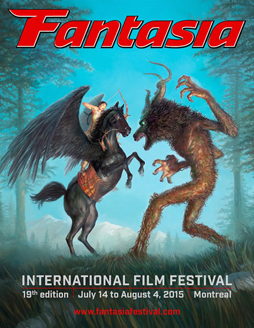 I’d hoped to put up the fourth of my series of posts on the fiction of C.S. Lewis last week; I didn’t, and this isn’t that post either. I ended up spending more time running around over the holidays than I’d expected, so while I’m hoping to get the Lewis post up next Sunday, for the moment I want to do something different. Having seen a number of discussions about Hugo voting emerge over the previous days, I’d like to put forward some suggestions for the Dramatic Presentation categories.
I’d hoped to put up the fourth of my series of posts on the fiction of C.S. Lewis last week; I didn’t, and this isn’t that post either. I ended up spending more time running around over the holidays than I’d expected, so while I’m hoping to get the Lewis post up next Sunday, for the moment I want to do something different. Having seen a number of discussions about Hugo voting emerge over the previous days, I’d like to put forward some suggestions for the Dramatic Presentation categories.
Regular Black Gate readers may remember that this past summer I covered the 2015 Fantasia International Film Festival in my home city of Montréal. I got to see a number of wonderful science-fiction and fantasy films from around the world. And I thought it might be worth looking back at those movies, partly to help people looking for works to nominate on their Hugo ballots, and partly to draw a bit more attention to some excellent work. So here are some films of possible relevance to Hugo voters, with quick summaries and links to my reviews. (I reviewed several movies in each post, so some of the different links go to the same places.)
In this post I’m going to stick to movies that are pretty clearly science-fiction, fantasy, and horror. I’ll divide my lists according to the Hugo rules: films ninety minutes long or more are eligible for Best Dramatic Presentation, Long Form, and those less than ninety are eligible for Short Form. I’m going to list movies in alphabetical order, with brief descriptions and the occasional critical observation. I’ll err on the side of completeness, listing even marginally genre movies. Although Worldcon membership skews American (or so the Hugo Awards web site states, under “Country & Language of Publication”) I’ll include films that have no American release listed, as presumably some readers aren’t American, and I have no idea what’ll be coming on Netflix or other venues in the next month or two. Note that I’m not necessarily recommending all the following films, and certainly not suggesting that Hugo ballots should be put together just from these lists. I’m only trying to highlight movies people might not otherwise have heard of, but might want to investigate now or later. If you want to look through all my reviews of the 2015 festival, you can find links at the bottom of the post linked here.
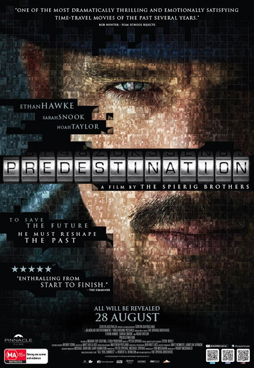 One last note: where it seems necessary I’ll include information about release dates, taken from the IMDB. The Hugo Awards web site says that a work can be eligible for a Hugo in the year(s) of its first release, of its English translation, and of its American release. So I’ll note those things when they’re relevant. Every movie I saw had an English translation, but some don’t seem to have had an official American release so I may actually be recommending things eligible in future years. I know that one movie I saw at Fantasia in 2014, the Robert Heinlein adaptation Predestination, has in fact had its eligibility extended and is eligible for this year’s award. (You can see my review at the link, but in short, I was impressed.)
One last note: where it seems necessary I’ll include information about release dates, taken from the IMDB. The Hugo Awards web site says that a work can be eligible for a Hugo in the year(s) of its first release, of its English translation, and of its American release. So I’ll note those things when they’re relevant. Every movie I saw had an English translation, but some don’t seem to have had an official American release so I may actually be recommending things eligible in future years. I know that one movie I saw at Fantasia in 2014, the Robert Heinlein adaptation Predestination, has in fact had its eligibility extended and is eligible for this year’s award. (You can see my review at the link, but in short, I was impressed.)
So here we go.
Eligible for Best Dramatic Presentation, Long Form
Ant-Man — Well, I did see this at Fantasia, and it is eligible. (And, in fairness, I did enjoy it quite a bit.) But you probably already know what you think of it.
The Arti: The Adventure Begins — A high-fantasy wuxia movie with steampunk elements set in Tang dynasty China, told through puppetry. Incredibly effective craft makes this story about a boy, his robot, and his sword-wielding sister come alive. Fantasia was the North America premiére, and the IMDB lists no other release dates.
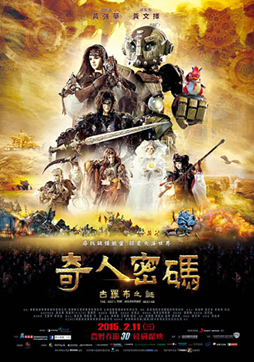 Assassination Classroom — A delirious knockabout comedy about a strange entity who teaches a high school class and intends to blow up the Earth … unless he can teach his students to kill him first. Wildly funny, but does have an abrupt ending, apparently setting up a sequel. Released in 2015 in Japan, Fantasia was its international premiére; it doesn’t seem to have played the US yet.
Assassination Classroom — A delirious knockabout comedy about a strange entity who teaches a high school class and intends to blow up the Earth … unless he can teach his students to kill him first. Wildly funny, but does have an abrupt ending, apparently setting up a sequel. Released in 2015 in Japan, Fantasia was its international premiére; it doesn’t seem to have played the US yet.
Attack on Titan: Part 1 — An adaptation of a manga set in a grim future when humanity’s been penned up behind high stone walls by an onslaught of seemingly-brainless flesh-eating giants. The movie version fails at creating character or an involving world, and even the fight scenes are only sporadically interesting.
The Blue Hour — A slow, subdued story of gay love in Thailand that mixes ghosts and dreams. It can be read as a supernatural story, though I felt in the end it was doing something else. A 2015 release at various festivals, including at least one in the US.
Boy 7 — An adaptation of a near-future Dutch YA story about a computer prodigy who falls afoul of the law and enters an experimental program that puts chips in the heads of young offenders. I found it competent, with some nice acting moments, but not exceptional. Note that the film I saw was a German film that played a US film festival in December, so is definitely only eligible for 2015; there’s also a Dutch-Hungarian adaptation of the same book.
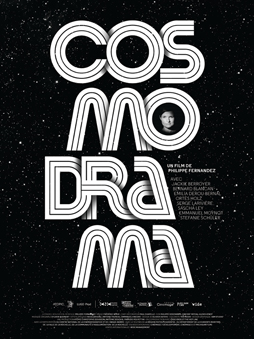 Cosmodrama — A philosophical comedy-drama about a group of people who wake up on a spaceship with no memory of who they are or where they’re going, and search for meaning. A must-see for anyone who wants to see a science-fiction movie that concentrates on science, it’s stunningly well-shot and constantly challenging. The IMDB has no information about an American release.
Cosmodrama — A philosophical comedy-drama about a group of people who wake up on a spaceship with no memory of who they are or where they’re going, and search for meaning. A must-see for anyone who wants to see a science-fiction movie that concentrates on science, it’s stunningly well-shot and constantly challenging. The IMDB has no information about an American release.
Director’s Commentary: Terror of Frankenstein — A metafictional game that takes an actual feature, 1977’s Terror of Frankenstein, and presents a new soundtrack in the form of a “director’s commentary” bringing out bizarre behind-the-scenes secrets. Not technically science-fictional but does create a world of its own. It played a US festival in May and Fantasia in July, the only two release dates listed at the IMDB.
Experimenter — This movie’s only marginally of interest to Hugo voters, as it’s a bio-drama that happens to be about a scientist, social psychologist Stanley Milgram; but then it’s also utterly brilliant. Smart and quick, it uses a range of theatrical and cinematic techniques to interrogate Milgram’s theories and experiments, especially his notorious obedience experiments using faked electroshocks.
 The Golden Cane Warrior — Indonesian wuxia movie about a woman, her four pupils, and her decision about which of them gets to learn her most powerful technique. A restrained film that builds to an effective fight scene. Came out in late 2014 in Indonesia, and doesn’t seem to have been theatrically released in the US though it was added to Netflix a few days ago, in 2016 — meaning, if I understand the Hugo rules right, it would have been eligible for last year’s Hugos (the year it was released), is eligible for this year’s (since the subtitled English version was released at Fantasia), and will also be eligible for next year’s (since it was “released” in the US in 2016 through Netflix).
The Golden Cane Warrior — Indonesian wuxia movie about a woman, her four pupils, and her decision about which of them gets to learn her most powerful technique. A restrained film that builds to an effective fight scene. Came out in late 2014 in Indonesia, and doesn’t seem to have been theatrically released in the US though it was added to Netflix a few days ago, in 2016 — meaning, if I understand the Hugo rules right, it would have been eligible for last year’s Hugos (the year it was released), is eligible for this year’s (since the subtitled English version was released at Fantasia), and will also be eligible for next year’s (since it was “released” in the US in 2016 through Netflix).
H. — A surreal science fiction story about an alien invasion centred on Troy, New York, or more precisely about the experiences of two women named Helen during the invasion. Well-shot, with strong character ideas, but the logic is difficult to follow and some of the symbolism feels forced.
Haruko’s Paranormal Laboratory — A surreal comedy about a woman whose TV set comes to life. There are aliens, a Jason Voorhees cosplayer, and pop idols who dress up as the KKK. Strange, but worth mentioning.
He Never Died — Henry Rollins is Jack, an indestructible old warrior whose long-lost daughter gets caught up in Jack’s feud with some underworld figures. Stylish, cool, and violent.
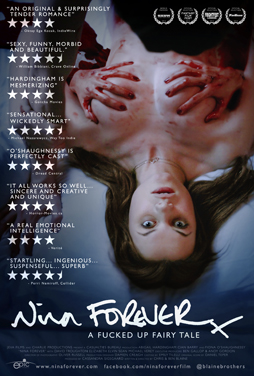 The Invitation — A suspense movie with a marginally science-fiction element in the form of a mysterious cultlike organisation, it follows a man at a dinner party where things get strange. Well-shot but I felt had some issues with plot and supporting characters.
The Invitation — A suspense movie with a marginally science-fiction element in the form of a mysterious cultlike organisation, it follows a man at a dinner party where things get strange. Well-shot but I felt had some issues with plot and supporting characters.
Ludo — An Indian horror film about four youths who stumble into a bloody god-game. Grisly and surreal, mixing contemporary Kolkata with mythic gore. Exactly 90 minutes long, according to the IMDB, thus eligible for the Long Form category; it had its world premiére at Fantasia this year, and played the Denver International Film Festival in November.
Nina Forever — A horror-comedy about a woman who falls in love with a man haunted by his dead girlfriend; whenever they make love, the dead ex manifests, dripping blood. Extremely well-written and well-observed. It’s played film festivals in the US, and is going to have a limited release in February.
Observance — A private investigator spies on a young woman, and enters into a world of conspiracy and horror. Well-shot and creates a mood of real fear, but difficult to parse at one viewing. Exactly 90 minutes.
Ojuju — A slow-but-effective Nigerian zombie movie. Solid use of zombies as a means for social commentary. Debuted at the Africa International Film Festival in 2014, it had its Canadian premiére at Fantasia, and I see mention of a screening a the 2015 Brooklyn Academy of Music’s New Voices in Black Cinema, which I assume makes it eligible for the 2015 Hugos.
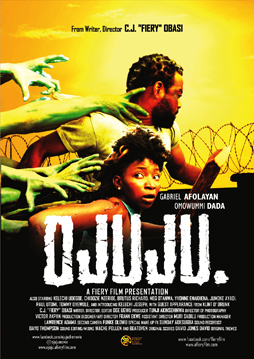 Orion — An idiosyncratic, archetypal post-apocalypse movie about a hunter and a magus battling over a virgin mother. Months later I’m still not sure what I think about this movie, but there’s undeniable ambition here. Does not seem to have been released in the US yet.
Orion — An idiosyncratic, archetypal post-apocalypse movie about a hunter and a magus battling over a virgin mother. Months later I’m still not sure what I think about this movie, but there’s undeniable ambition here. Does not seem to have been released in the US yet.
Poison Berry in My Brain — Technically not SF, this romantic comedy more than hints at actual darkness, following a thirtyish Japanese woman through various relationship issues; we follow not just her outer life, but what goes on inside her head, as her various states of mind argue with each other over what she should do. The original manga was conceived at about the same time that Pixar began working on Inside/Out — while I still haven’t seen that movie, I can say that this one is effective, funny, well-acted, and suspenseful when it needs to be. Again, I can find no information on a US release.
Raiders!: The Story of the Greatest Fan Film Ever Made — A story about three young teens who made a shot-for-shot remake of Raiders of the Lost Ark back in the 1980s, and how they come together to complete the film today. Surprisingly touching even for non-Raiders fans.
Rurouni Kenshin: The Legend Ends — The third film in a trilogy adapting a samurai manga, this was a strikingly effective steampunk samurai movie with some superheroic touches. Well-paced, with dynamic fight scenes. I can’t find information on an American release, though it seems to be available on DVD and blu-ray through Amazon.
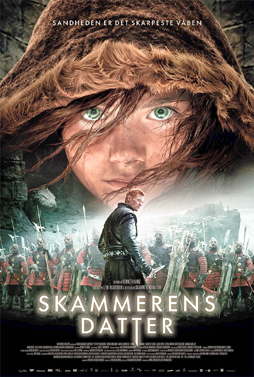 The Shamer’s Daughter — An effective adaptation of a Danish high-fantasy YA novel, recalling classic fantasies like Ladyhawke and Dragonslayer but with a girl in the lead. Creates a sense of what the director called “grounded fantasy” while also building a good adventure story suitable for all ages. Unfortunately, this is another one that doesn’t have any information about an American release.
The Shamer’s Daughter — An effective adaptation of a Danish high-fantasy YA novel, recalling classic fantasies like Ladyhawke and Dragonslayer but with a girl in the lead. Creates a sense of what the director called “grounded fantasy” while also building a good adventure story suitable for all ages. Unfortunately, this is another one that doesn’t have any information about an American release.
Snow Girl and the Dark Crystal — Also known as Zhongkui: Snow Girl and the Dark Crystal, this is a fantasy epic based on Chinese myth, using stylised CGI to tell a broad story of heroes and villains. Colourful and exciting, it’s a little reminiscent of the Marvel movies, and worth watching for anyone who likes those films. Now available on Netflix in Canada and the US.
Strayer’s Chronicle — A Japanese movie about teens with alterations in their genetic code that give them super-powers, fighting similarly-powered villains and trying to prevent the end of the world. Some nice moments fade as the movie drags on, with the plot making less and less sense, and the story growing increasingly bathetic.
Synchronicity — A noirish, heavily Blade Runner–influenced time-travel movie. Tries to grapple with science and with ideas. Officially opens in the US on January 22 on iTunes and video-on-demand.
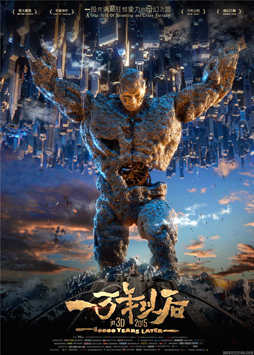 Teana: 10000 Years Later — Also known simply as 10000 Years Later, this is a 3D CGI post-apocalypse high fantasy. Adventurous, with startling visuals and a trenchant plot; if you liked the Lord of the Rings movies, this is well worth looking at. First released in China in 2015, Fantasia was its North American premiere; the IMDB does not show a US release date.
Teana: 10000 Years Later — Also known simply as 10000 Years Later, this is a 3D CGI post-apocalypse high fantasy. Adventurous, with startling visuals and a trenchant plot; if you liked the Lord of the Rings movies, this is well worth looking at. First released in China in 2015, Fantasia was its North American premiere; the IMDB does not show a US release date.
Traders — Dark 90-minute satire with a slightly science-fictional bent, in which men ruined by a tanking economy join an anonymous online club that sets up fights to the death: winner takes all the loser’s stuff. Taut and clever, though I wondered if it could have hit harder.
Turbo Kid — Tongue-in-cheek midnight-movie homage to post-apocalypse 80s action movies, with much violence and gore. And yet oddly sweet, for all that. A 2015 film that barely passes the 90-minute mark (it’s 93 minutes long), it’s available on blu-ray or DVD, or as a download.
Eligible for Best Dramatic Presentation, Short Form
Ava’s Possessions — A horror-comedy that can easily be read as urban fantasy, about a woman recovering from demonic possession in a world where possession is so frequent 12-step programs exist to help survivors. Clever, witty, and builds a distinctive world. A feature film that’s only 89 minutes long. (We’ll see a number of features on this list that have a running time of less than ninety minutes.)
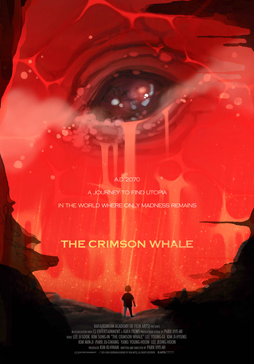 The Crimson Whale — A Korean animated film about treasure seekers in a bleak future. An elegant science-fictional take on Moby-Dick, with stunning visuals. At only 70 minutes long, it’s eligible for the Short Form category. I can’t find it at the IMDB, so I don’t know if it’s been released in the US yet.
The Crimson Whale — A Korean animated film about treasure seekers in a bleak future. An elegant science-fictional take on Moby-Dick, with stunning visuals. At only 70 minutes long, it’s eligible for the Short Form category. I can’t find it at the IMDB, so I don’t know if it’s been released in the US yet.
Crumbs — A 68-minute-long surreal Ethiopian post-apocalypse story about a man struggling to find himself, voyaging through the cultural debris of the west while mysterious aliens loom above. Intensely symbolic and artful, though arguably flat on a narrative level.
“Fish Out Of Water” — A 10-minute short horror film about a fisherwoman who catches something she does not expect. Tight and effective.
“Goldfish” — A touching 16-minute short film about wishes and friendship, based on a short story by Israeli writer Etgar Keret. By turns funny, disquieting, and heartwarming, this short packs a lot into its brief runtime and won the Audience Award for Best Short Film at Fantasia. I don’t think it’s yet screened in the US.
Hostile — An 89-minute French horror film that gleefully plays with classic horror imagery and plot twists. It follows two teen girls who may be victims or may be monsters; it moves well, and takes unexpected turns (though technically there’s no SF content). Released in France in 2014, the IMDB shows no American release as yet.
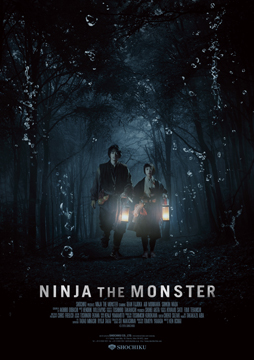 “Juliet” — A French short film about the invention and marketing of humanlike androids. A clever parody of commercialism, as new versions of the androids get iPhone-like minor upgrades.
“Juliet” — A French short film about the invention and marketing of humanlike androids. A clever parody of commercialism, as new versions of the androids get iPhone-like minor upgrades.
“The Mill at Calder’s End” — This was a short (14 minute) gothic horror story, not unlike The Woman in Black, but made with puppets. Atmospheric and impressive; available through vimeo video-on-demand.
Ninja the Monster — A ninja in 18th-century Japan has to escort a noblewoman to her arranged marriage, but a mysterious monster gets in the way. Imaginatively shot and thematically coherent, but less action than you might expect. The IMDB lists no American release for this 81-minute feature.
Nowhere Girl — Slow and somewhat elegiac, this fable about a girl at art school builds to a violent climax. Well-shot, although the twist ending may be obvious. The first live-action feature from Mamoru Oshii (Ghost in the Shell) is only 85 minutes, therefore eligible for Short Form. It doesn’t seem to have been released in the US.
On the White Planet — A bleak, brutal animated fable about a man in full colour on an otherwise white planet. Visually striking, unrelentingly grim. Feature length, but only 73 minutes, so goes into the Short Form category. The IMDB gives no release date for the US.
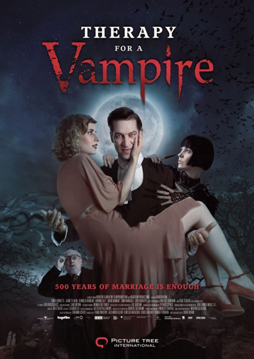 They Look Like People — Two old friends reconnect, but one of them is suffering from an apparent mental illness, and believes that aliens are trying to send him messages. This eighty-minute feature is an odd one, in that it uses some science-fictional concepts in a way that clearly presents them as hallucinations, so the actual SF content is minimal; but it’s a fine film, challenging yet upbeat.
They Look Like People — Two old friends reconnect, but one of them is suffering from an apparent mental illness, and believes that aliens are trying to send him messages. This eighty-minute feature is an odd one, in that it uses some science-fictional concepts in a way that clearly presents them as hallucinations, so the actual SF content is minimal; but it’s a fine film, challenging yet upbeat.
Therapy for a Vampire — A charming and inventive 87-minute-long horror-comedy about vampires and Sigmund Freud. Classical vampire-story approach alongside some clever humour. Released in Europe and South Korea in 2014, its official US release date per the IMDB is April 11, 2015.
The Visit — A documentary examining how governments and scientists would react if aliens landed. Well-shot and hypnotic, but not likely to tell genre fans anything they don’t already know. Another feature less than 90 minutes long.
I want to note that I also saw a showcase of several short science-fiction films. I’m not sure how easy it is to find any of them, but I want to mention the highlights: France’s “Maxiplace” is a nice Gilliam-esque satire of inequality, but I don’t know if it’s officially a 2014 or 2015 release for Hugo purposes. “The Rat’s Dilemma” s a powerful ten-minute Israeli film. “Legacy” is a decent movie about a man whose dead father is downloaded into his brain. The suspenseful “Shut-in” explores a possible future for virtual reality. “The Future Perfect” uses the voice of Zachary Quinto in a touching time-travel story. “ReStart” presents another time-travel film, one that nods to The Terminator and Isaac Asimov. “Dark Was the Night” has an obvious ending, but tells its story well.
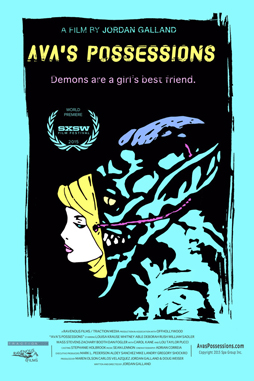 With all that said, are there any movies I’d particularly recommend? As should be clear, there were certainly some films I liked more than others. If I had to put together a ballot for the Dramatic Presentation categories based just on the films above … it would be an interesting exercise. There are fewer films in the Short Film category, so that’s easier. Let’s say The Crimson Whale, Crumbs, Ava’s Possessions, Therapy for a Vampire, and “Goldfish,” probably in that order. They Look Like People and Hostile narrowly miss my ballot.
With all that said, are there any movies I’d particularly recommend? As should be clear, there were certainly some films I liked more than others. If I had to put together a ballot for the Dramatic Presentation categories based just on the films above … it would be an interesting exercise. There are fewer films in the Short Film category, so that’s easier. Let’s say The Crimson Whale, Crumbs, Ava’s Possessions, Therapy for a Vampire, and “Goldfish,” probably in that order. They Look Like People and Hostile narrowly miss my ballot.
For Long Form it gets tougher. If I wanted to put together a list of artistically ambitious movies, I’d go with The Experimenter, Cosmodrama, Director’s Commentary, probably Orion, and then The Blue Hour — or possibly Ludo. If I wanted adventure and spectacle, I’d look at Teana: 10000 Years Later, Snow Girl and the Dark Crystal, The Arti, Rurouni Kenshin, and Shamer’s Daughter. Ant-Man, a film I quite liked, doesn’t make the cut. Assassination Classroom and Nina Forever don’t really fit on either list, but both are excellent (in very different ways). How would I make a final list? I’d say The Experimenter and Cosmodrama are the best of the first five; I’d then say that Teana, Snow Girl, and The Arti are similar enough that I’d prefer to pick only one of them, likely The Arti for the sheer craft involved. And then … given that this is a genre award, I find it hard not to pick The Shamer’s Daughter, for its classic high-fantasy feel. Which leaves room for one more. Nina Forever is a better film than Assassination Classroom, but not by as much as you might think. And then again, Kenshin was a blast. So I’m looking at a three-way fight for that last spot — and I can’t really rule out Ant-Man or even He Never Died as dark horses.
 Maybe it all just goes to show how many options there are for the Hugos. How many good genre films are being made around the world. How rich the choice is. These movies are only from one film festival, and only the films I happened to see.
Maybe it all just goes to show how many options there are for the Hugos. How many good genre films are being made around the world. How rich the choice is. These movies are only from one film festival, and only the films I happened to see.
I know a lot of people don’t get to see a lot of smaller movies. Putting this list together I was dismayed to find how many films don’t have American release dates listed. And certainly a lot of bigger movies are well-done and worth voting for. Still, I wanted to point out that there are other options; that smaller-scale genre films are worth looking at. It’s possible that for some of them, a Hugo nomination may have a significance that would be lost on a larger production. But in the end these movies are worth watching because they’re good movies: entertaining, or thought-provoking, or both. I hope they find their audience, and I hope the genre audience gets to find them.
Matthew David Surridge is the author of “The Word of Azrael,” from Black Gate 14. You can buy a collection of his essays for Black Gate, looking at some fantasy novels of the twenty-first century, here. You can find him on Facebook, or follow his Twitter account, Fell_Gard.